Imagine this… you’re exhausted and in need of a decent night’s sleep.
So you go to bed and get that perfect night of rest.
You wake up relaxed, refreshed, and ready to dominate the new day.
Sound too good to be true?
This could be because you’re up all night worrying about bed bugs.
These pests can really be your worst nightmare. They are especially a problem when left unchecked for an extended period of time.
Therefore bed bugs need to be detected quickly through the use of bed bug traps.
In this article, we will discuss these traps in terms of their effectiveness, how they should be used, and what traps are the best for detecting these pests.
Page Contents:
Do Bed Bug Traps Really Work?
Yes, bed bug traps do actually work.
However, bed bug traps are likely not the only line of defense against your problem.
If you aren’t sure if you have a bed bug infestation or not, a bed bug trap can answer that question for you.
These traps are an effective way to capture several bed bugs at once. So they are the perfect tool to monitor the situation effectively.
Benefits of Bed Bug Traps
- Using a trap will reduce the number of bugs and, therefore, the number of bites.
- Bed bug traps do not use pesticides to kill.
- Plastic traps can be used again and again so you will always have a trap available.
- You can use bed bug traps to monitor your bedding to avoid serious infestations.
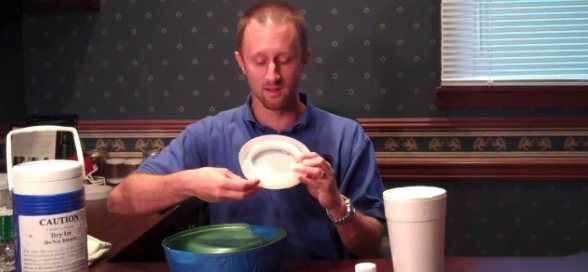
Limitations of Bed Bug Traps
- Most bed bug traps do not catch bugs that come from your mattress. They focus on those that crawl on the floor.
- Bed bug traps that use glue or other adhesives will have to be replaced regularly.
- If the problem is serious…traps will NOT stop an infestation from spreading.
What is the Best Bed Bug Trap?
The best bed bug trap can vary from case to case.
Though here is our favorite:
The Ortho home defense bed bug trap is our favorite trap for luring and capturing bed bugs. To be used as a method of early detection, Ortho advertises a 3 step process with its complimentary products for the detection and removal of bed bugs.
The pack contains two traps, each lasting about two weeks. The beauty of this trap is that it uses a special formula to lure bed bugs, vs. classic glue traps that require a bed bug to ‘happen’ to walk over the trap. This company recently upgraded its products, and now advertises that this new trap is 3X more effective than its predecessor.

For optimal results, these traps should be placed simultaneously and replaced after two weeks.
Price: $14.50 for a pack of 2
The best traps typically accomplish 2 things:
- They lure bed bugs out of their hiding place using heat or CO2.
- They either kill or immobilize bed bugs once exposed.
A recent study published in the Journal of Economic Entomology highlighted the effectiveness of these traps.
The study focused on the 2 main types of bed bugs:
- The Common Bed bug (Cimex lectularius)
- The Tropical Bed Bug (Cimex hemipterus)
They found that because tropical bed bugs secrete a sticky substance to help them climb, they can actually climb out of many common bed bug traps.
You’re probably wondering…
how do we recognize the difference between different types of bed bugs?
The bad news is…
You can’t.
These 2 types of bed bugs are practically indistinguishable to the naked eye. After all, bed bugs are already so tiny to begin with.
To make matters worse…
Although tropical bed bugs were originally introduced in more tropical locations throughout the U.S. such as Florida, they have since moved further inland.
For these reasons, it is important to try out multiple traps at once.
Again, traps won’t be the only tool you use to eradicate bed bugs, but using different traps helps you better understand your infestation.
(Through trial and error).
How Do You Draw Bed Bugs Out of Hiding?
Bed bug traps don’t persist through to the mattress and box spring…
(where bed bugs hang around).
So you will have to draw them out of hiding for the traps to work.
So where do bed bugs hide aside from the bed?
Bed bugs are tiny and flat, so they can hide almost anywhere.
The most common hiding places include:
- Inside the mattress and box spring.
- In or around the bed frame.
- Inside furniture.
- On carpet and curtains.
- Inside holes, cracks, and other dark crevices nearby.
Bed bugs come out of these places and bite you during sleep because they are attracted to your body heat.
According to Laboratory Medicine, bed bugs are naturally drawn to warmer places and places that emit CO2.
They are also attracted to human pheromones.
This makes certain remedies such as:
- Insecticides
- Tea tree oil
- or Diatomaceous earth…
largely ineffective products if you’re unable to penetrate bed bugs in their hiding places.
To draw them out of hiding, you need to take advantage of their desire for heat or CO2.
Here’s the thing… many traps and lures will actually have both features built right into them.
They will have a lure that warms up or emits CO2 that draws them towards the trap, and they will have an effective mechanism to keep them stuck.
Some people have even tried CO2 fumigation to eliminate their problem.
This does a few things…
For one, it improves the mobility of bed bugs.
(Not good).
However, it also lures them toward a potentially dangerous environment and cuts off their supply of oxygen.
The Journal of Medical Entomology found that concentrations of CO2 greater than 30% could kill all bed bugs in an environment within 24 hours.
Although bed bug traps won’t provide that high of a CO2 concentration, they will use CO2 or some other means to draw them out.
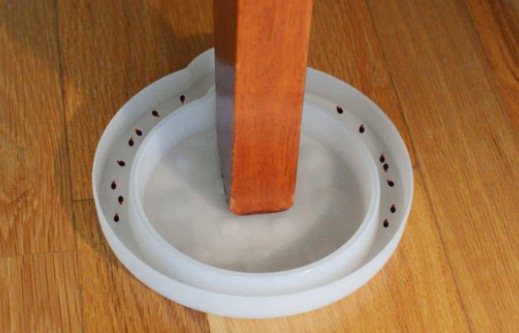
Then you can determine how serious the problem is and whether CO2 fumigation or some other means is an appropriate next step to getting rid of bed bugs permanently.
More Bed Bug Traps That Work
Here are 3 additional bed bug traps that we tested and recommend for dealing with bed bug infestations:
Trapper Max Glue Traps
The Trapper Max Glue Traps are our favorite traps for capturing bed bugs, Not only are they extremely affordable at $7.00 for 12 glue boards, but they can be used for a variety of insects and rodents. The extra-large version covers 29 sq. CM of capture area, and it can be used laying flat or folded for a cover trap.
Price: $7.09 ($0.59 per glue board)
Raid Bed Bug Detector & Trap
The raid bed bug detector and trap is one of our top options for early bed bug detection. This product comes in a pack of 8 for around $10.00 so it is comparable to similar products. What separates this trap is that it’s partially enclosed, and has a small see-through window where you can view captured bed bugs inside. This can be beneficial for those that don’t want to see dead or stuck bed bugs out in the open.
This product is disposable and made for indoor use (whether it be in a hotel, apartment, or single-family home).
Price: $10.17
Hot Shot Bed Bug Glue Trap
Last but certainly not least, is the hot shot bed bug glue trap. This trap provides an easy way to detect your bed bug infestation, as they come ready to use and are completely disposable. Similar to the others, these traps contain no killing agents, and the trap should be checked at least once per week for evidence of bed bugs.
Price: $6.47
Bed bug traps are essentially serving as monitors.
So they can be placed in various locations around your bed to see where bed bugs are coming from.
Whether you make a trap yourself or buy one from the store…
You should follow these guidelines:
- Place the traps in areas where bed bugs crawl across such as near the bed frame, on a nearby windowsill, or close to holes in the wall.
- Set the trap and let it sit. Bed bugs are most active at night so you may have to wait 24 hours to check for results.
- If you are using a trap with adhesives, make sure you check it regularly to ensure that the adhesive is still strong enough.
(Adhesives generally need to be replaced every 2 – 3 days.)
How to Use Bed Bug Traps
How to properly set the trap will depend on the type of trap that you buy. The most popular bed bug traps are interceptor traps and pheremone traps.
Bed Bug Interceptor Traps
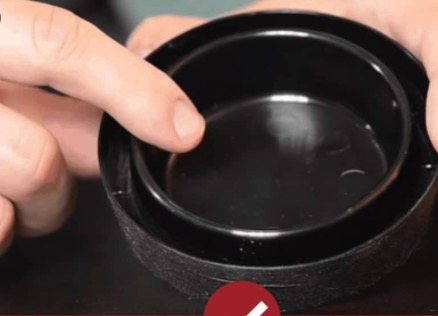
Bed bug interceptor traps capture bed bugs before they get to you.
They are typically placed near the foot of your bed to capture bed bugs coming from around the room.
These are plastic traps with an outer and inner wall that keeps bed bugs hostage but does not kill them.
These are the types of traps that are less effective on tropical bed bugs since they can easily climb back out.
Luckily the common bed bug cannot.
Lure (Pheromone) Traps
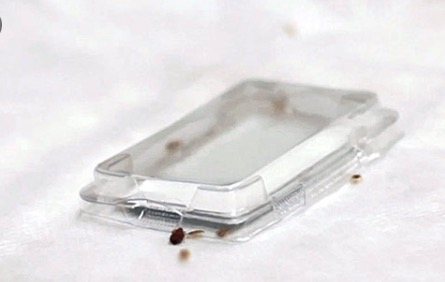
These traps are very similar to the interceptor traps, with 1 key difference.
These ‘Lure’ traps actively attract bed bugs towards them by emitting pheromones.
Bed bugs are naturally attracted to human pheromones and will confuse the scents ultimately leaving them trapped inside.
Some of these traps also come with an adhesive on the inside to keep bed bugs secured.
This makes for a more effective trap for tropical bed bugs.
How to Make a Trap For Bed Bugs
If you don’t have the time to run to the store and search for bed bug traps…
The good news is that you can make some yourself.
The below video provides concrete instructions on how to build your bed bug trap.
This is the perfect solution when you want a budget-friendly option to pest control.
But you’re probably wondering… do DIY bed bug traps work?
Yes.. if done correctly.
You can make a DIY bed bug trap if you have any of the following:
- Sugar and yeast
- Glue
- Tape
DIY Bed Bug Traps
Although they may not be as effective as professional bed bug traps, DIY traps can be a cheap and quick way to mitigate a bed bug infestation and identify the difference between insect species.
Sugar and Yeast
Remember, bed bugs are naturally attracted to CO2 among other things.
Combining sugar and yeast will produce low levels of CO2 emissions that can lure bed bugs toward an interceptor trap.
Here’s how:
First you need an interceptor trap. You can use one from the store or make one yourself.
Here’s how to make an interceptor trap:
Step 1 – Use a plate, bowl, or cup – turned over, the item must have a rim around the flat bottom which would be the center.
Make sure it’s placed in a where bed bugs can crawl up.
Step 2 – Line the rim with talcum powder or adhesives so that they cannot get back out once they cross the rim.
Once your trap is done…
Step 3 – In a large bowl or bucket combine 1.5 pounds of sugar, 1/3 pound of yeast, and 6 pints of warm water.

Mix the contents of the bowl for a few minutes. For the next 6-8 hours, the bucket will produce low levels of CO2 that will lure bed bugs toward it.
Place the bucket on top of one or more traps that will capture the bugs before they can climb all the way into the bucket.
Glue Traps
Glue traps are pretty self-explanatory.
Bed bugs walk over the glue and get stuck.
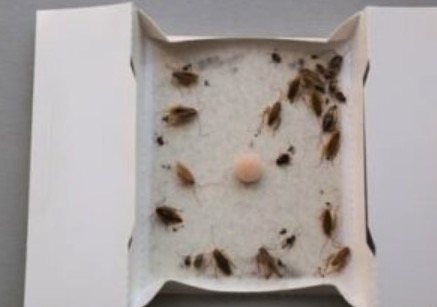
The glue is placed on a thin sheet of paper or a napkin and placed in the same place as other traps.
The idea is that if bed bugs are crawling to get to your bed, they will have to crawl over the glue and get stuck.
Glue traps can be an easy means of detection if you suspect an infestation.
But, if the problem is serious, then glue traps may fill up quickly. Plus, the glue will eventually dry out, so it is important to check them regularly.
Tape Traps
Tape traps work similarly to glue traps. The adhesive is meant to capture bed bugs as they approach your bed.
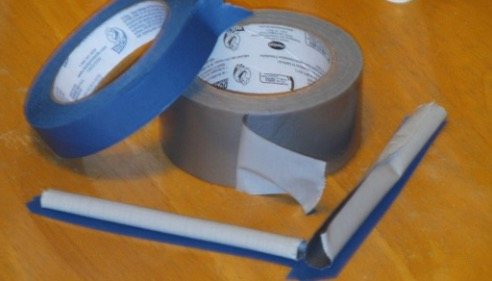
Tape traps are slightly less effective.
Bed bugs have an innate capacity to find the quickest way to their destination and will likely turn around if they encounter an obstacle such as tape.
Though tape can be placed in more nuanced locations such as along the bed frame or up the legs of the bed.
Where to Buy Bed Bug Traps
Nowadays, bed bug traps are easy to find online or at several in-store locations.
Any hardware store works.
Including:
- Home Depot
- Menards
- Even Walmart carries traps.
With only a few clicks, you can sort through hundreds of traps online through various sellers or on Amazon.
Alternatively, you can check with Terminix, Orkin, or your local termite or pest control business.
They may offer solutions themselves or point you in the right direction.
Types of Bed Bug Traps [Infographic]

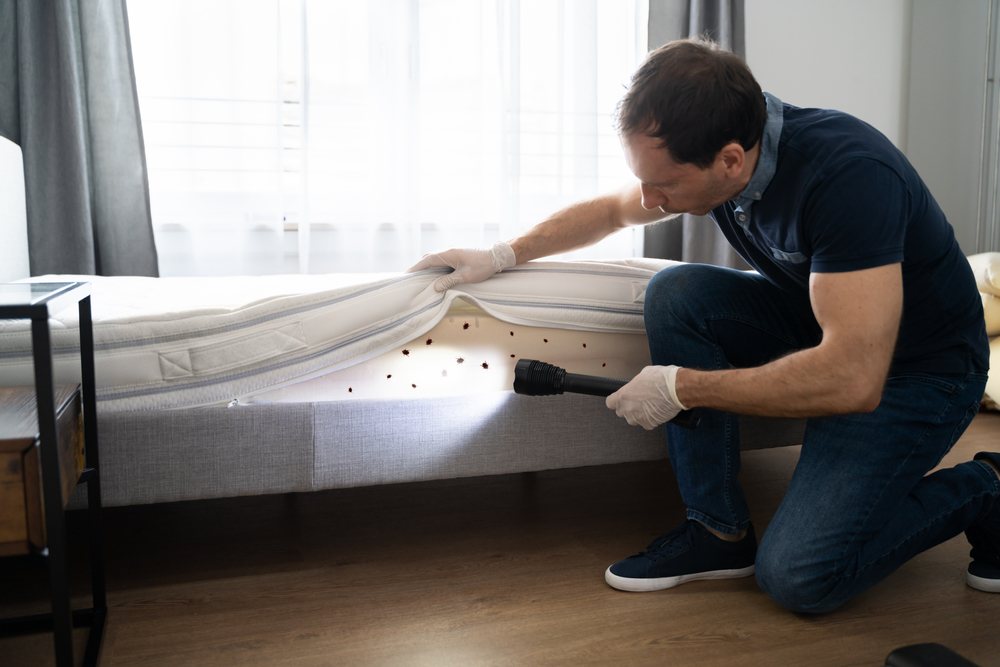
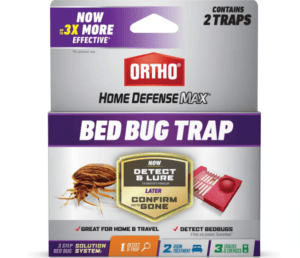
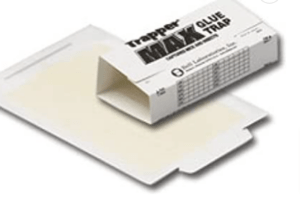
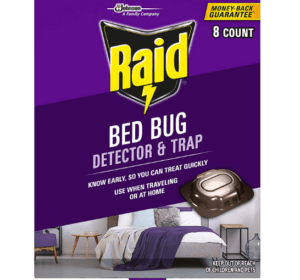
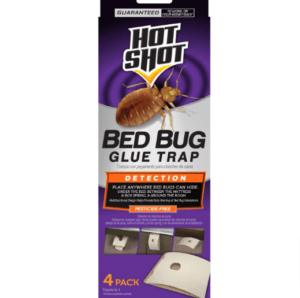

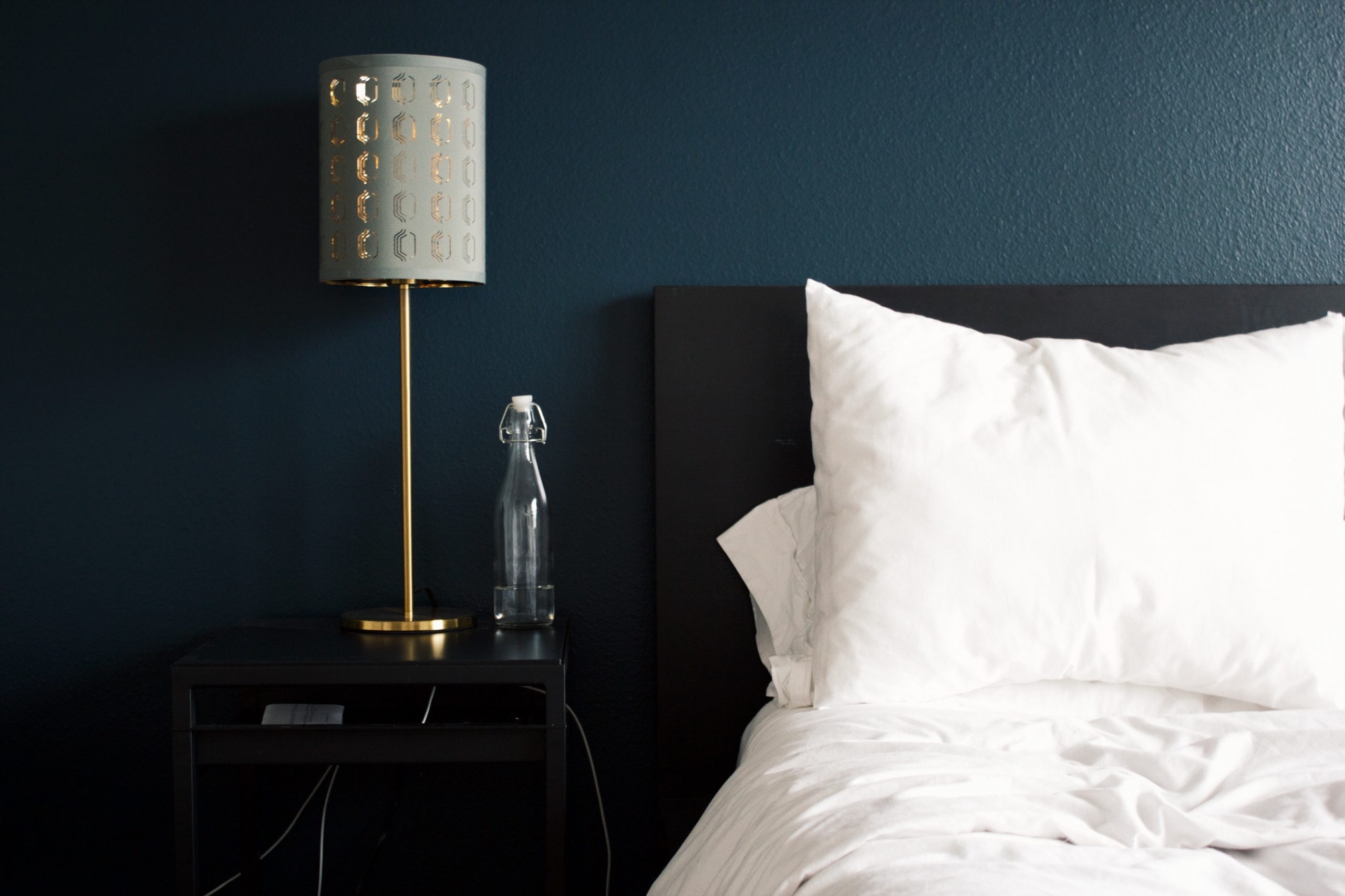


What is the best place to buy bed bug traps? I would like to provide more detail on my specific situation. I have bed bugs crawling all around the legs of my bed and i have seen them both of the last 2 nights. What is the best trap for this? I tried making my own trap and it did not work 🙁 but maybe i did something wrong.
Robert — Loving your site and what you bring to the entomological battle-ground of fighting the resurgence of bed bugs the past few decades. I’ve left a long reply on another post re: some suggested home solutions short of hiring pro exterminators. However, as a “bug doc” in WA State I’ll point out that glue traps or any adhesives (while usually effective on initial forays of a new colony, or scouts from established harborages) will almost certainly cause other bed bugs to avoid the area due to the alert pheromones bed bugs will immediately issue when they become trapped. This can cause humans to think their bed bug population is lower than it actually is, due to other bugs actively avoiding that area. Smooth plastic interceptors (least expensive) or active CO2 / heat / pheromone traps (e.g. “NightWatch” bed bug monitor — most expensive, or the “Bed Bug Beacon” – more expensive than insect interceptors (e.g. “ClimbUps”) but far less than the NightWatch) or D.I.Y. solutions that don’t cause a bed bug to immediately panic (e.g. glue traps) and emit warning pheromones to avoid the area are much more sound for actively detecting the extent and success in reduction of existing bed bug sites and worst-case, infestations. Hope this helps! Keep up the great work.
Hi D. Benjamin – Thanks so much for your feedback! The bed bug team is always looking for additional bed bug experts to publish credible and quality bed bug content for the information hub. We would love your expertise – Please email us at support@bedbuglawyer.org if you’re interested!